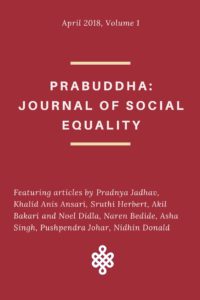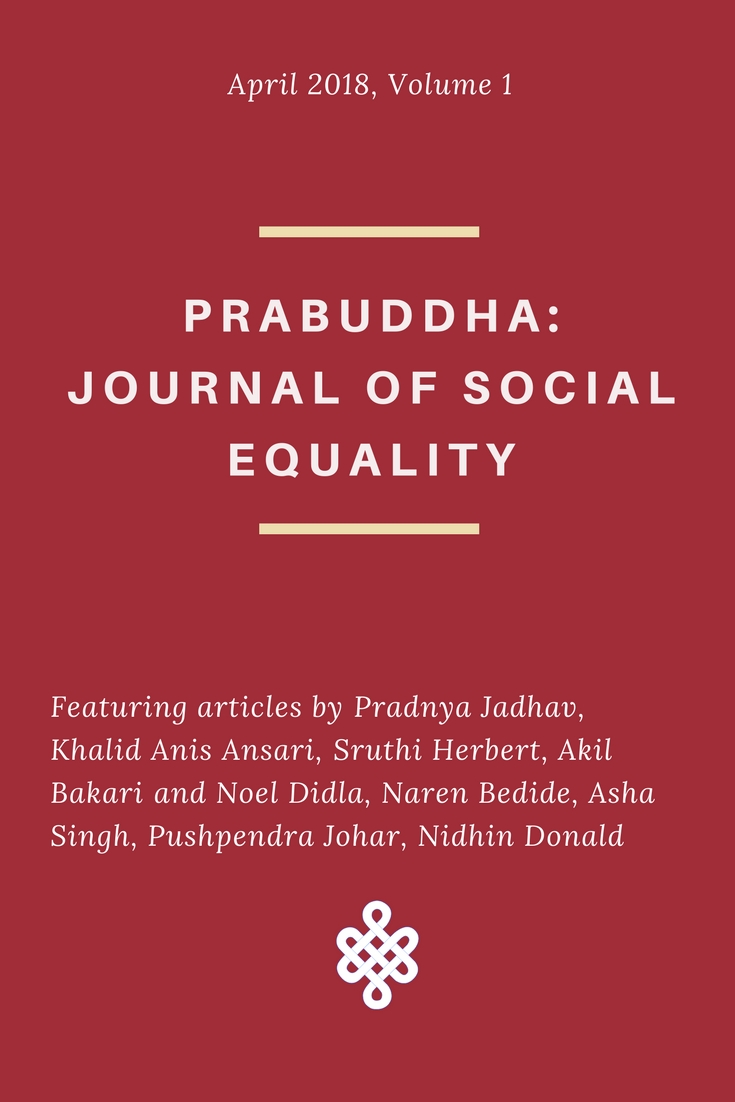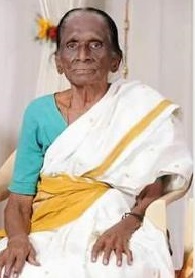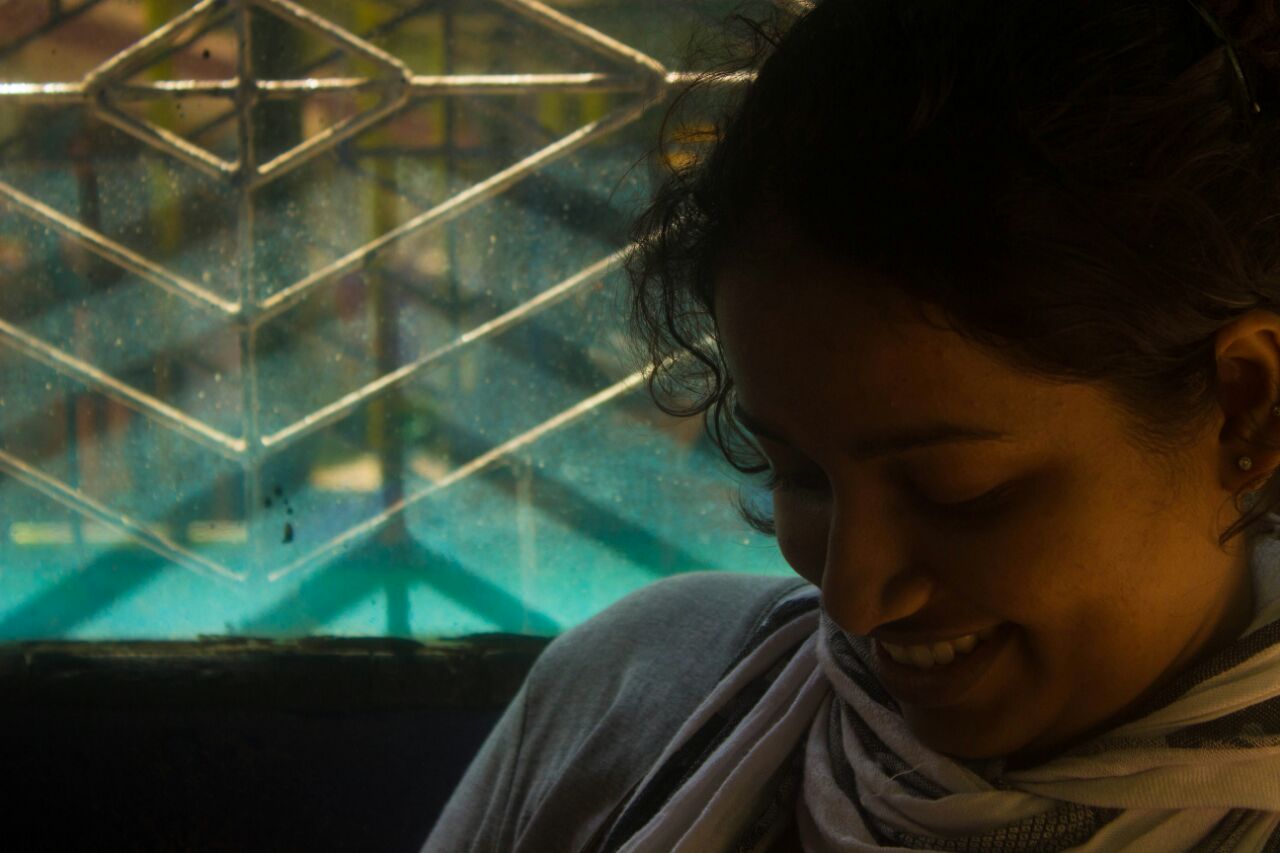Sruthi Herbert
 The first issue of Prabuddha: Journal of Social Equality carries research articles and an interview by Dalit Bahujan Women scholars. SAVARI is happy to share excerpts of their articles here.
The first issue of Prabuddha: Journal of Social Equality carries research articles and an interview by Dalit Bahujan Women scholars. SAVARI is happy to share excerpts of their articles here.
This excerpt is from Sruthi Herbert’s article on anti-Bahujan development under the journal section of Research Papers. Please read Prabuddha’s About page and Instructions for Authors if you would like to submit articles.
An excerpt from “The Nation in the Village: Anti-Bahujan Development”
This paper will be structured in three sections. In the first, I will introduce the field site and show how caste reflects in its geography. In the second, I will detail the working of a gramasabha, or a ward-council meeting in the field site. In the third, I will explain how public meetings organized in the panchayat for addressing caste discrimination was held. And in the fourth section, I will conclude.
Caste Geography
Fieldwork, done between 2014 and 2015 was in a village, that administratively is one ward of a local council, the smallest unit of local governance, in central Kerala. I will call the field site ‘Perur’. Perur ward belongs to the gramapanchayat called Oridam. The population in Perur, gleaned from various data sources obtained through the gramapanchayat is approximately 1650, with 479 households, of which 98 households, that is, 20.5% were classified as SC. (This representation is high in comparison to the state and district average for rural areas – of 10.32% and 12.20% households respectively).
Kerala often claims exceptionalism as a post-caste society. Caste engraved into a village space such as my field site is easy to miss on a cursory visit. However, houses, by their location and construction indicate the caste-class status of their inhabitants. The field site has a ‘colony’ – which are spaces where lower caste households, mainly scheduled castes – like Paraya (basket weavers), Pulaya (agricultural workers), and Kanakkan (both fish vendors and agricultural workers), and fewer number of other lower castes like the Karuvan (Ironsmith), Kollan (Blacksmith), and Thandaan (farm hands) etc – are concentrated. There is a Kumbaran colony, a colony of potters near the ward boundary. There is an area of Christians along the main road, near the church, and these are well-to-do upper caste Syrian Christians. There is an area where poorer, backward Christians live, away from the main road, near the potters’ colony, intermingled with other lower caste Hindu households: like Ezhava and Thattan (goldsmiths), most of whom are daily wage labourers – in occupations like painting, house construction etc. The only Muslim family in the ward lives right next to the mosque. Vilakkathala Nair (caste of barbers that were exclusive for serving upper castes), another ‘lower-caste group’, stay close together, as a cluster of houses further away from the main road. The locality of Namboodiris (Kerala Brahmins) with good houses and land are located centrally. Close to these are other upper castes houses: like Pisharody, Nambiar and Nair. Caste identities of people living here are known publicly. There are nearly 20 caste groups among 479 households.
This geography of caste, as in other places, have not been accidental. In Perur, this has global connections, coming as it does, out of displacement for a canal irrigation project. The project itself was part of the Grow More Food campaign in 1946, started after rice shortages induced by the second world war. (Santhakumar et al., 1995) This caste geography was further reinforced when, through the land reforms, colonies were formally established. (Sreerekha, 2012)
Having laid out the importance of caste even in the structuring of physical spaces, I want to talk about some of the meetings organized by the local governance bodies in my field site.
Gramasabha meetings
During fieldwork, I attended some local council meetings called the ‘gramasabha’ meetings – these are more appropriately the ‘ward council’ or ‘ward-gramasabha’ meetings. In one of the meetings, new applications for various government schemes were being accepted. The beneficiaries for schemes were to be selected from the applications submitted that day. Mostly women had turned out to represent their families. They were applying for schemes that distributed livestock such as goats and calves, poultry like chicken, and enclosures like hen coops and goat hutches, as well as the more significant grants for building houses, house repairs, toilets etc. There were also applications for pensions – widow pension, old-age pension, disability pension etc.
Addressing them, the ward councillor told assembled people that allocations would be made according to ‘munganana’, or priority. The order of priority was as follows: first the Scheduled Caste community members, then widows, then the disabled, and then the old. Now we have to note that the ‘non-scheduled caste members’ who were excluded from priority included both upper castes as well as lower caste OBCs like blacksmiths, goldsmiths, iron smiths, and farmhands. This order of priority was reiterated at every meeting that I attended, and everyone had become familiar with it, so much so that it had become part of people’s explanation as to why they did not get any help from the government: they do not have priority.
Special Schemes to Priority, Priority to Reservation
The priority list came to mean that there was an exclusive treatment towards Scheduled Caste members. From here, it was easy for this discourse to transform into its popular form of widespread resentment that “All benefits go to the SC community members because of reservation.” Very often, the resentment came from the poor people, who were not from the scheduled castes, but from the OBC castes who had been told that SCs were taking their benefits away.
Legitimised from government platforms (especially gramasabha meetings), and repeated by the local upper caste elites, the idea that welfare measures were ‘reservation’ benefits achieved a status of truth. So, did only SC members receive benefits? Examining the list of approved beneficiaries tells a different tale. It shows that only 32.4% of the total beneficiaries were from the SC communities. That is, ‘other’ communities benefitted equally, or more, from government schemes. When only five SC households received assistance for house repair, double the number of beneficiaries were chosen from ‘Other’ communities.
What is ignored while foregrounding this (anti-) ‘reservation’ rhetoric is the actual process and several official criteria that influences how beneficiaries of panchayat schemes are selected. This includes compiling the names of applicants for various schemes by various panchayat functionaries and officials, vetting through working groups, selection by elected representatives themselves etc. It serves to also cover the uncomfortable but well-known fact that political affiliations and personal friendships play a role in deciding who the beneficiaries are. Also, examination of the local council documents revealed that SC communities availed assistance for house construction or repair from the Scheduled Caste Sub-plan set aside exclusively for them. Therefore, strictly speaking, there was no ‘munganana pattika’ (priority list) from which beneficiaries were chosen – the benefits were allocated only from special schemes, and very often not from the regular government schemes unless there were stipulations to adhere to. It appeared that local bodies were spreading misinformation, intended to cause resentment against each other among the poor ‘lower castes’.
~~~
[1] Names of places and people have been changed to protect privacy.
Reference
Herbert, S. (2018). The Nation in the Village: Anti-Bahujan Development. Prabuddha: Journal Of Social Equality, 1(1), 57-67. Retrieved from http://prabuddha.us/index.php/pjse/article/view/15


